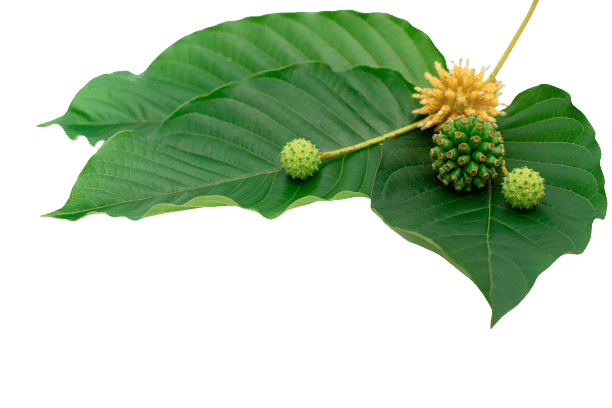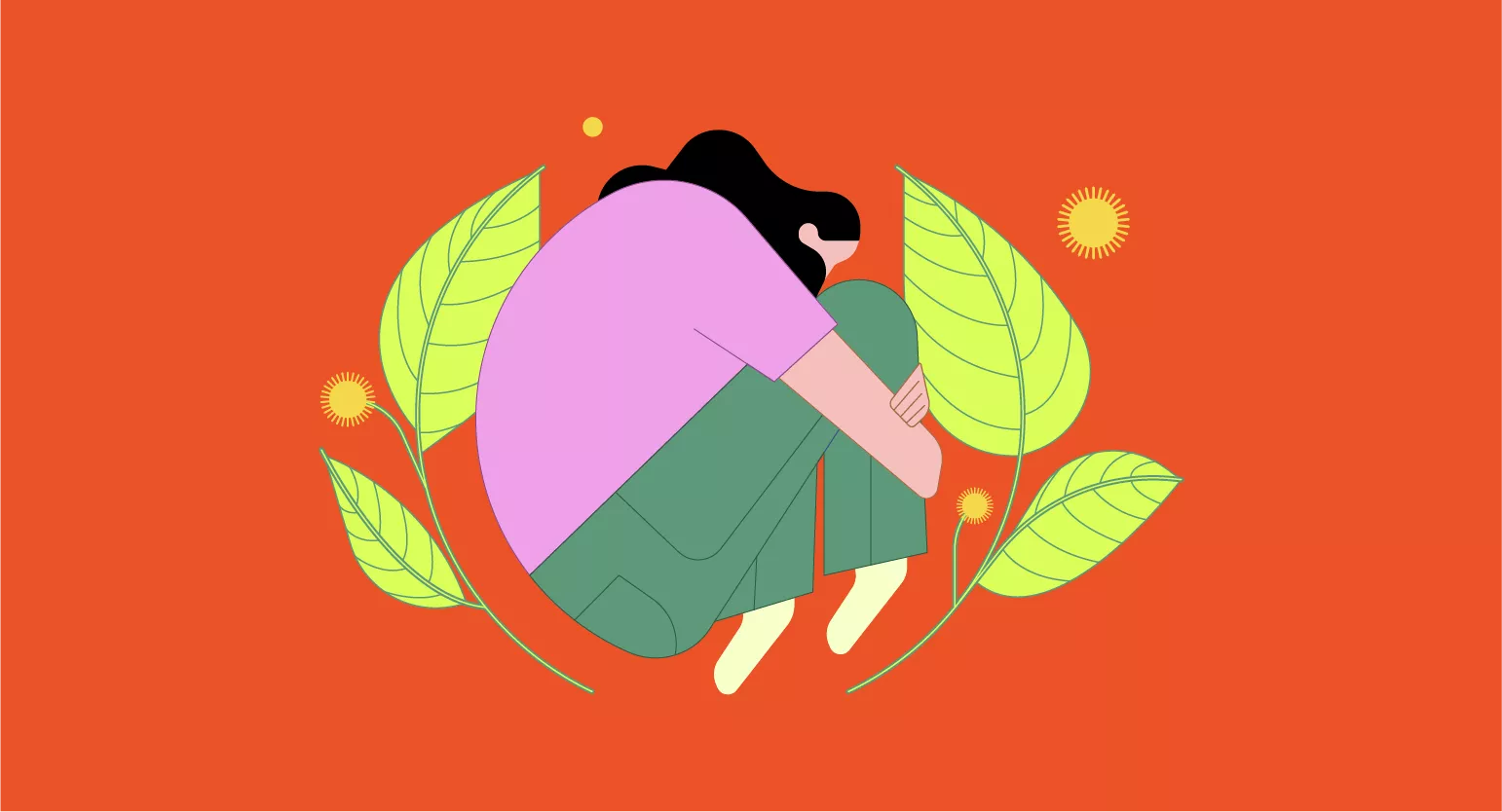| Kratom | Akuamma | |
| Source | Mitragyna speciosa, native to Southeast Asia | Picralima nitida, native to tropical Africa |
| Active alkaloids | Mitragynine, 7-hydroxymitragynine | Akuammine, praline, pseudo-akuammigine |
| Uses | Analgesic, antidepressant, anti-diarrheal, stimulant, sedative, nootropic | Analgesic, anti-inflammatory, antibacterial, anti-diarrheal, stimulant |
| Side Effects | Dry mouth, nausea, headache, dizziness, drowsiness | Headache, hepatotoxic in high doses, hyperkalemia |
| Dose | 2-6 grams, varies; lasts up to 6 hours | 2-6 grams; lasts up to 5 hours |
| Cost | $10-$15 per ounce | $3-$8 per ounce |
| Legality | Unrestricted, illegal in some states | Unrestricted |
What Is It Used For? Akuamma vs. Kratom
Both kratom and akuamma contain alkaloids that provide a variety of benefits.
Akuamma’s primary alkaloid, akuammine, is structurally similar to mitragynine, the main alkaloid in kratom. These alkaloids react with the mu-opioid system, act as muscle relaxants, analgesics, and exhibit some hypotensive properties [1, 2].
These similarities mean both plants offer many of the same benefits, though on different levels. Here’s what you can expect from each.
Akuamma Uses
Compared to other parts of the tree, akuamma seeds have the highest concentration of alkaloids and are the only part of the plant that contains akuammine.
The seeds have antibacterial, analgesic (pain reliever), antipyretic (fever reducer), and anti-inflammatory properties [3]. They’re said to offer a degree of euphoria, though opinions vary regarding that.
Akuamma seeds also help mitigate the following [4]:
- Diabetes
- Diarrhea
- Fever
- Intestinal worms
- Malaria
- Vomiting
However, the seeds are not the only part of the tree with medicinal value.
The bark helps with jaundice, intestinal parasites, and yellow fever.
The root is commonly used for treating jaundice and pneumonia; the leaves for guinea worm and measles; and the sap for ear infections or as a topical for measles. Many believe the fruit is effective for coughs, chest colds, and fever.
Kratom Uses
This bitter, earthy-tasting herb has many medicinal benefits. Kratom, or Mitragyna speciosa, is a tropical evergreen in the coffee family and has been used since the nineteenth century.
There are over forty alkaloids in kratom, and two have a unique effect on the mu-opioid system, making it almost as powerful a pain reliever as morphine — without the risk.
Kratom has been shown to help with the following conditions [5]:
- Anxiety
- Depression
- Energy
- Insomnia
- Nootropic effects
Dose and strain determine the exact impact.
How Will It Make Me Feel? Akuamma vs. Kratom
Both help with pain and sedation, but each has different strengths.
Kratom offers a greater variety of physical effects, but it also has health benefits.
Akuamma seems more equipped to treat disease. So, what can you expect to feel after taking them?
The Effects of Akuamma
While ingesting akuamma probably won’t give you the euphoric effects that kratom offers, it still produces the following effects :
- Calmness
- Improved sleep
- Muscle relaxation
- Pain relief
- Reduced anxiety and stress
- Sedation
It usually takes about fifteen to thirty minutes for the effects to kick in and lasts up to six hours.
The Effects of Kratom
There’s no cut-and-dry answer to this. The color of the leaf vein classifies kratom; this vein color gives insight as to what effects you’ll experience. Here’s a quick rundown:
- Red vein is known for its potent analgesic and sedative properties.
- White vein has stimulating properties. Users feel energized, focused, and confident.
- Green vein is a middle ground between the two, offering mild pain relief, calmness, and a boost in energy.
There’s also yellow and gold kratom, though this has nothing to do with the color of the veins. A unique drying process produces these strains; they’re comparable to green vein strains.
There are some common effects shared between the strains to varying degrees.
Common physical effects are:
- Energy
- Pain-relief
- Sedation
Common mental effects of kratom include:
- Alertness
- Confidence
- Decreased anxiety
- Enhanced mood
- Euphoria
- Increased focus and concentration
- Relaxation
- Sociability
But, again, each strain is unique, and even dose size influences the results.
It usually takes about thirty minutes to feel the effects and lasts up to five hours.
Possible Side Effects: Akuamma vs. Kratom
There aren’t many in-depth studies on either plant, so there’s little science to back up many of the claims, good or bad. Medicinal plants are drawing the attention of researchers, and the little we know about akuamma and kratom looks promising.
Akuamma and kratom are all-natural as long as they’re unadulterated. Kratom is probably a little safer to use, only because more research and anecdotal evidence surround it. Here’s a close look at the short- and long-term side effects possible with each.
Short-Term Side Effects of Akuamma
Specific side effects, such as headaches, usually begin at low doses and increase with higher doses and continuous use. Though more studies are needed, akuamma seems safe — but it’s important to note that it’s also a sedative.
Long-Term Side Effects of Akuamma
There’s still not a whole lot known about akuamma or its long-term effects on physical and mental health.
Individuals should never combine akuamma seeds with hypotensives, sedatives, muscle relaxants, or painkillers.
It possibly acts as a contraceptive and shouldn’t be used during pregnancy or if you’re trying or planning on becoming pregnant.
Akuamma & Addiction
There isn’t much information on whether or not akuamma is addictive and causes withdrawal symptoms. As with any other type of herb or drug, taking too much too often can result in physical or mental dependency, and quitting or stopping can result in uncomfortable side effects.
Withdrawal may be similar to that of kratom since they both interact with opioid receptors.
Short-Term Side Effects of Kratom
Some side effects are associated with kratom; however, they’re minor and usually only occur in higher doses or when first used.
Side effects of kratom may include:
- Brain fog
- Constipation
- Dizziness
- Headaches
- Lethargy
- Nausea
Long-Term Side Effects of Kratom
Though rare, high levels of long-term kratom use can cause liver injury [6]. It can also cause dangerous interactions with other medications or drugs.
If you’re taking other medications, talk to your doctor before using kratom and avoid using it during pregnancy or with other drugs or alcohol.
Kratom & Addiction
Because of its interaction with the mu-opioid system, it’s possible to become addicted to kratom. This is one of the top concerns regarding its long-term health effects and why it’s illegal in some states. Dependency can occur if a user consistently uses kratom and repeatedly increases the dose to feel its effects.
However, this kind of addiction is different from other opioid addictions. Kratom withdrawal can come with minor side effects, and you’d likely experience one or more of the following:
- Agitation/irritation
- Anxiety
- Changes in mood
- Depression
- Insomnia
- Muscle aches
- Runny nose and watery eyes
Though addictive, the symptoms are usually mild and easy to overcome compared to other opioid drugs.

How Do I Take It? Akuamma vs. Kratom
Traditionally, people would use these plants by chewing parts straight from the tree. Everyone else needs to find a reliable vendor and take it as a powder, in capsules, or in another available form.
However, dosing for kratom and dosing for akuamma is different, so don’t use your standard kratom dosage if you plan to consume akuamma.
Taking Akuamma
Locals crush akuamma seeds into a fine powder and take it orally or chew small amounts of the seeds, leaves, fruit, or bark for pain or to ward off hunger during long treks through the bush.
You can buy akuamma as a powder or in capsules. Most people mix the powder into hot water and drink it as tea or use the famous “toss-and-wash” method, where the loose powder is placed in the mouth and washed down quickly with a drink. It’s rapidly absorbed, but the bitter taste is tough to palate and can cause nausea or vomiting.
Common dosage
Dosage varies from individual to individual, and new users should start with small amounts. Suggested doses are as follows:
- Mild to moderate pain: 250-500 milligrams, or about ⅔ tsp
- Severe pain: 2-6 grams
It takes about half an hour for the effects to kick in and lasts up to five hours.
Taking Kratom
The most popular way to take kratom is as a powder or in capsules, but it also comes in tinctures and extracts. Like akuamma, users commonly ingest the powder after mixing it into a beverage or using the “toss-and-wash” method.
The amount needed varies on what form you choose and what effects you’re after. As previously mentioned, the strains have varying results, and dose plays a big part in the outcome.
Related: Everything You Need to Know About Kratom Capsules.
Common dosage
Again, the dosage varies on the individual and is more challenging to narrow down because of the strains involved. The general guidelines for kratom are as follows, though we recommend researching specific strains and their effects.
- Low dose: 2-6 grams
- High dose: 6-12 grams
It takes about forty minutes to feel the effects and can last up to six hours.
So What Do Kratom and Akuamma Have in Common?
Akuamma, or Picralima nitida, is a plant native to tropical Africa, primarily found in Ghana, Cameroon, Nigeria, Congo, Uganda, Zaire, Gabon, Cabinda, and the Ivory Coast. It produces flowers and seed-filled fruits year-round; these parts, along with the roots and bark, are used for medicinal purposes. The seeds are crushed into powder and sold.
Kratom, or Mitragyna speciosa, is found in Thailand, Indonesia, Malaysia, Myanmar, and Papua New Guinea. Its leaves are chewed or, more commonly, dried than powdered and sold.
They offer a few of the same benefits, such as analgesic effects, sedation, reduced anxiety and stress, calmness, and muscle relaxation. Euphoria may or may not be a shared benefit — you’ll have to find that out for yourself.
However, kratom seems to have a stronger bond to the opioid receptors in our brains and, therefore, considerably stronger effects.
Final Thoughts: Is Akuamma a Good Alternative to Kratom?
Kratom and akuamma have certain similarities, and both have been used medicinally for many years, but they are not exactly alike. One major difference is that akuamma seeds all offer the same effects. There are no other varieties of akuamma seeds or trees; therefore, the results are the same across the board.
Kratom comes in several vein colors, all of which produce different effects.
That said, if kratom is illegal where you live, akuamma could be a viable alternative, depending on your needs.
- Ellis, C. R., Racz, R., Kruhlak, N. L., Kim, M. T., Zakharov, A. V., Southall, N., … & Stavitskaya, L. (2020). Evaluating kratom alkaloids using PHASE. PloS one, 15(3), e0229646.
- Menzies, J. R., Paterson, S. J., Duwiejua, M., & Corbett, A. D. (1998). Opioid activity of alkaloids extracted from Picralima nitida (fam. Apocynaceae). European Journal of Pharmacology, 350(1), 101-108.
- Duwiejua, M., Woode, E., & Obiri, D. D. (2002). Pseudo-akuammigine, an alkaloid from Picralima nitida seeds, has anti-inflammatory and analgesic actions in rats. Journal of Ethnopharmacology, 81(1), 73-79.
- Erharuyi, O., Falodun, A., & Langer, P. (2014). Medicinal uses, phytochemistry and pharmacology of Picralima nitida (Apocynaceae) in tropical diseases: A review. Asian Pacific journal of tropical medicine, 7(1), 1-8.
- Fluyau, D., & Revadigar, N. (2017). Biochemical benefits, diagnosis, and clinical risks evaluation of kratom. Frontiers in psychiatry, 8, 62.
- Pantano, F., Tittarelli, R., Mannocchi, G., Zaami, S., Ricci, S., Giorgetti, R., … & Marinelli, E. (2016). Hepatotoxicity induced by “the 3Ks”: kava, kratom and khat. International journal of molecular sciences, 17(4), 580.









